The highlights of the technique of Miya carpenter (Domiya carpenter) are the roof shape, the curved eaves, and the shape of the wife. Others include Dougong and whether the rafters are parallel rafters or fan rafters. In the structure, it is a wooden frame.
The woodwork cannot be seen on the surface, so you can only see it when you are making it. I’m lucky if I can see it when partially dismantling and repairing or assembling a new building. Miya carpenter tourism is a mechanism that makes this possible.
There is a considerable difference in the structure between the old building and the new building. It may be more fun to look at the sukiya architecture and mansion because it is difficult to get inside or deep inside just by worshiping at a shrine or temple. There are small to large shrines and temples, and it is one of the pleasures to see the good materials of large buildings. If you look at the highlights in detail, there is no end to it, but if you look at it broadly, the eaves of the roof above is a showcase of technology for the palace carpenter.
To explain in order, first of all, the types of roofs of shrines and temples include thatched roofs, thatched roofs, thatched roofs, and copper plate roofs. In addition, the roof shapes include Irimoya-saku, Treasure-shaped, Hip-roofed roof, Gable roof, Kara gable, and Zigzag gable. There are various types of curves at the eaves, such as slack in the house and Mino instep, which form the elegant shape of the shrine and temple architecture. The styles include Horyuji Temple in the Nara period, Tang (Zenshu), Daibutsu, Japanese, and eclectic styles.
The good thing about the shrines I’ve seen so far is that when I remove Kyoto, the Taga Taisha Shrine in Shiga was good. The roof is made of cypress bark, and the Kagura-den and Heiden are overlapped from the front shrine to the main shrine, and although it is a complicated shape, it fits nicely.
The shrine and temple architecture can be seen from various angles, but here, let’s focus on the roof and introduce it.
The building I would like to introduce is not only a historical building but also an important cultural property and a national treasure. You can find many historical buildings in Kyoto, Shiga, and Nara that are fun to see, such as Horyuji Temple in Nara, Kiyomizu Temple in Kyoto, and Onjoji Temple in Shiga. Of course, there are other prefectures besides those three prefectures, so I will introduce them as well.
The first is Chokyuji Temple in Nara. It is said that Emperor Shomu built it to mourn Mayumi Ono, a longbow of Mayumi Ono, who died in an accident. The main hall is designated as a national treasure.
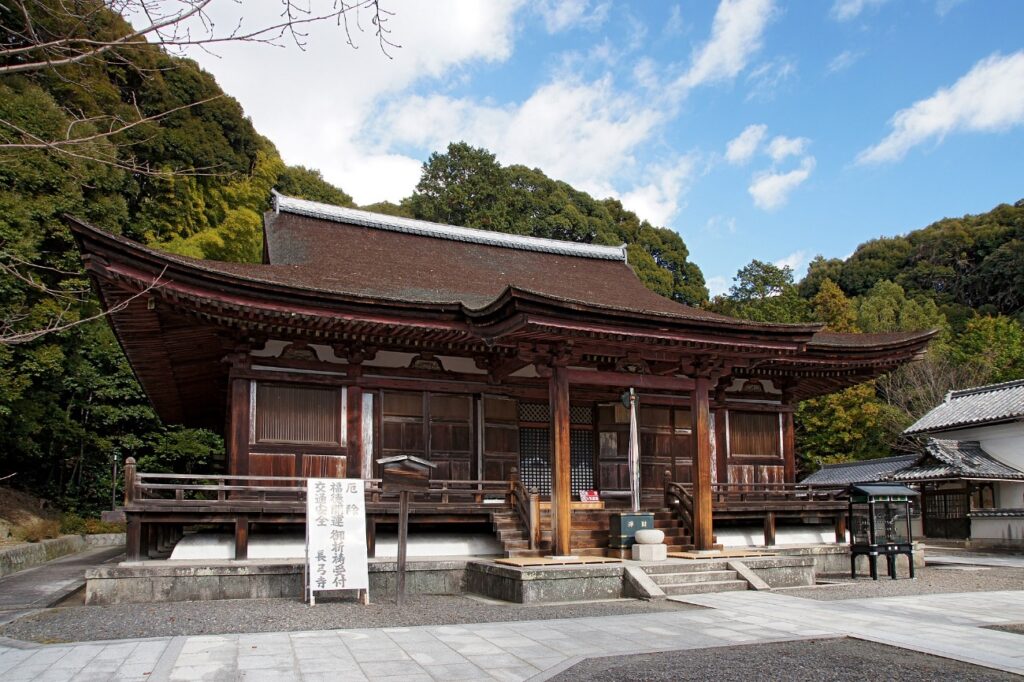
It is a cypress-roofed building and is characterized by a large warp. By making the pillars in the corners a little longer than the pillars around them, we have devised ways to prepare for the start of warping. Many of the buildings in the Kamakura period have been devised to prevent warping of the eaves. By extending the pillars in the corners, the members attached to the extended pillars become habitual and require more advanced technology. I feel that the old palace carpenters had thought out how to look beautiful.
It is a building of the same age, and there is a temple called Saimyoji (Wa-sama) in Shiga.
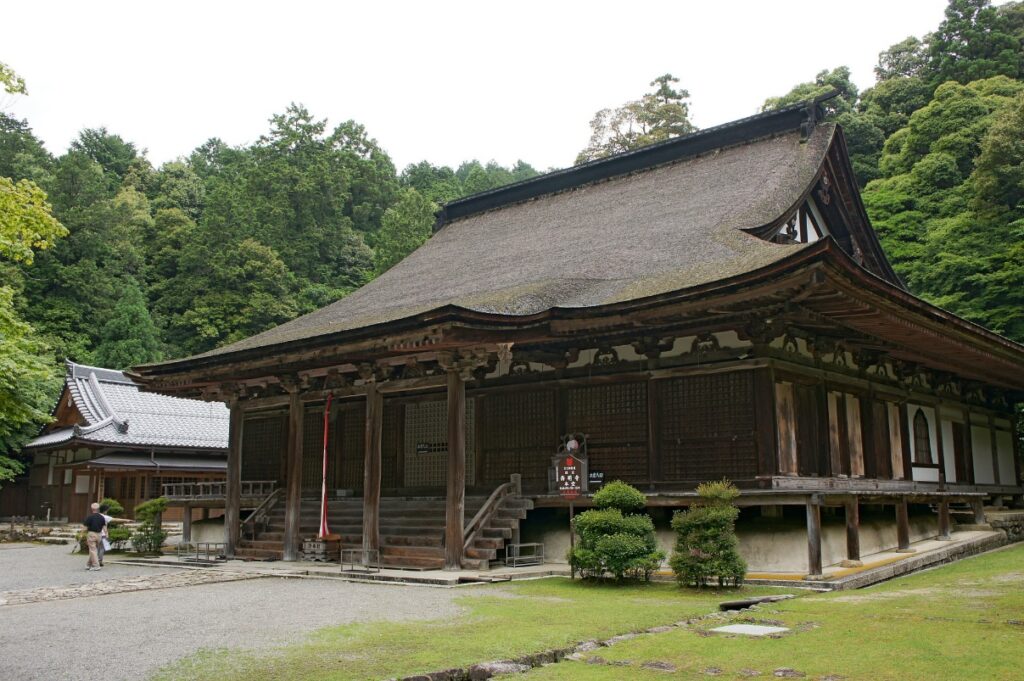
This is also a cypress bark, with pillars in the corners extending.
Next, I would like to introduce Mikagedo in Wakayama.
Miedo, which was built on the Danjo-garan of Mt. Koya, a sacred place for Shingon esoteric Buddhism opened by Kukai, was originally built by Kukai (Kobo Daishi) as a Buddhist temple of the ten great disciples, Sozu. .. Later, he enshrined the statue of Kobo Daishi Mikage, which was handwritten by King Shinnyo, and was named Mikagedo. The roof is a treasure-shaped roof with a cypress bark. Main halls and halls have many gabled roofs, and treasure-shaped roofs are not uncommon, but the roof slope is gentle and the eaves warp is gentle. The appearance is completely different between the treasure-shaped work and the Irimoya-saku, but if you think that there is an Irimaya-saku as an extension of the treasure-shaped work, you can see the curve when you see the Irimaya-saku. It looks like they are connected.
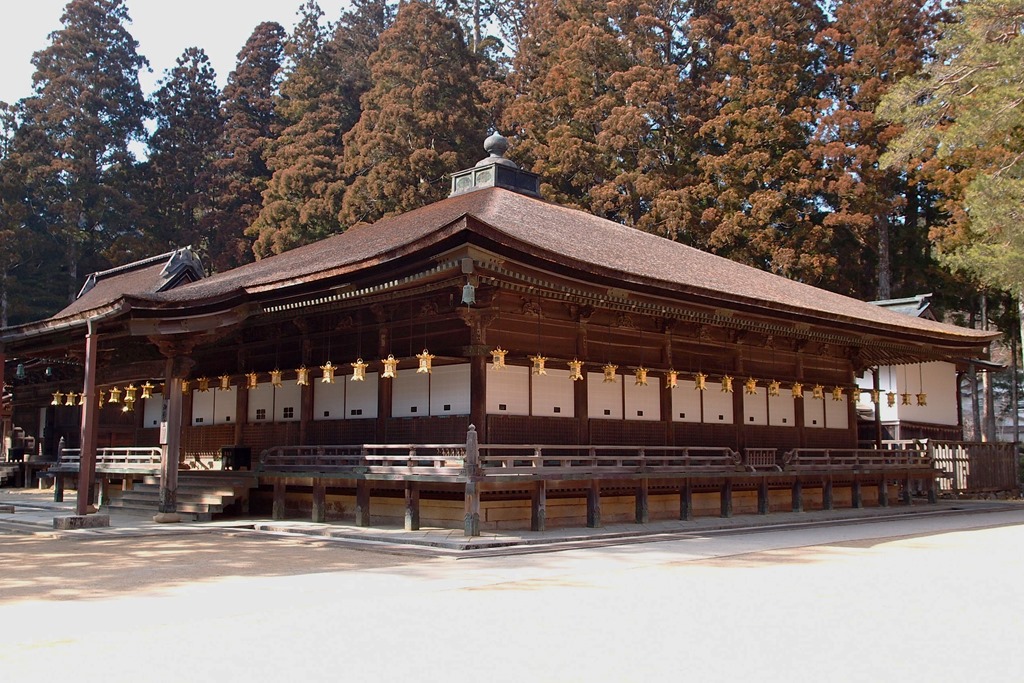
Next, I would like to introduce Hiunkaku, which is located in the precincts of Nishi Honganji Temple in Kyoto.
It is one of the three Kyoto cabinets, along with the Kinkaku and Ginkaku.
According to one theory, it is said to be the remains of Jurakudai, which was built by Toyotomi Hideyoshi.
It has been designated as a national treasure as one of the representative buildings of the Momoyama period, and although it is usually closed to the public, it is sometimes opened to the public.
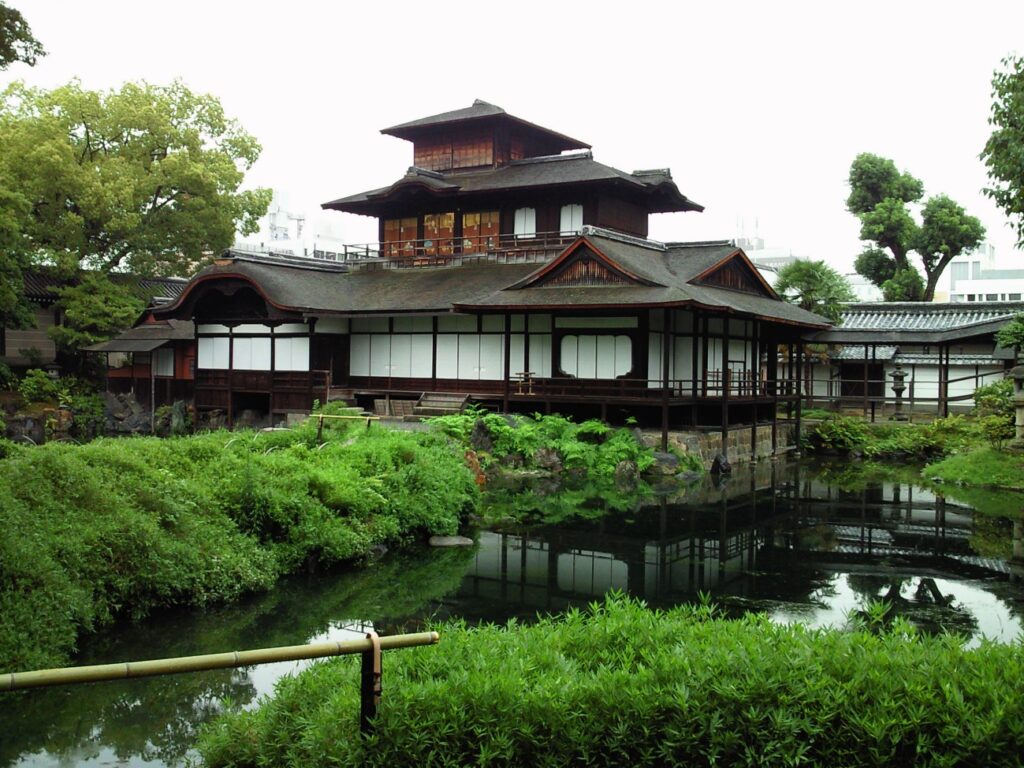
The roof is thatched.
It is a three-story tower building, and the roof of the first layer is made by Irimoya in the shape of Karahafu, and the roof of the second layer and the third layer are rolled up.
Many traditional buildings are symmetrical, but Hiunkaku thoroughly avoids symmetry and creates exquisite shapes. You can see the asymmetrical aesthetics.
In Kanagawa, the Engakuji Shariden in Kamakura is probably famous.
It is the only national treasure building in Kamakura, and it is said that it got its name because it houses Buddha’s teeth (Buddha’s teeth).
It is the oldest Zenshu-sama (Tang-sama) building in Japan.

The roof is made by a thatched roof.
It is a typical Zen Buddhist building, and although it looks like a two-story building, the eaves are called Mokoshi, and the three-handed dougong is a fan rafter, and the eaves also warp greatly toward the corner. It is a feature that it is.
There is a saying that “carpenters and sparrows cry at the eaves”, but even if it is such a complicated building, it fits nicely, and you can see the technique of the palace carpenter at that time.
Finally, I would like to introduce Samukawa Shrine, which is also located in Kanagawa.
Located in Koza-gun, adjacent to Atsugi City and Chigasaki City, Samukawa Shrine has a long history of 1600 years. It is said that there is only one god of Happouyoke in the whole country.
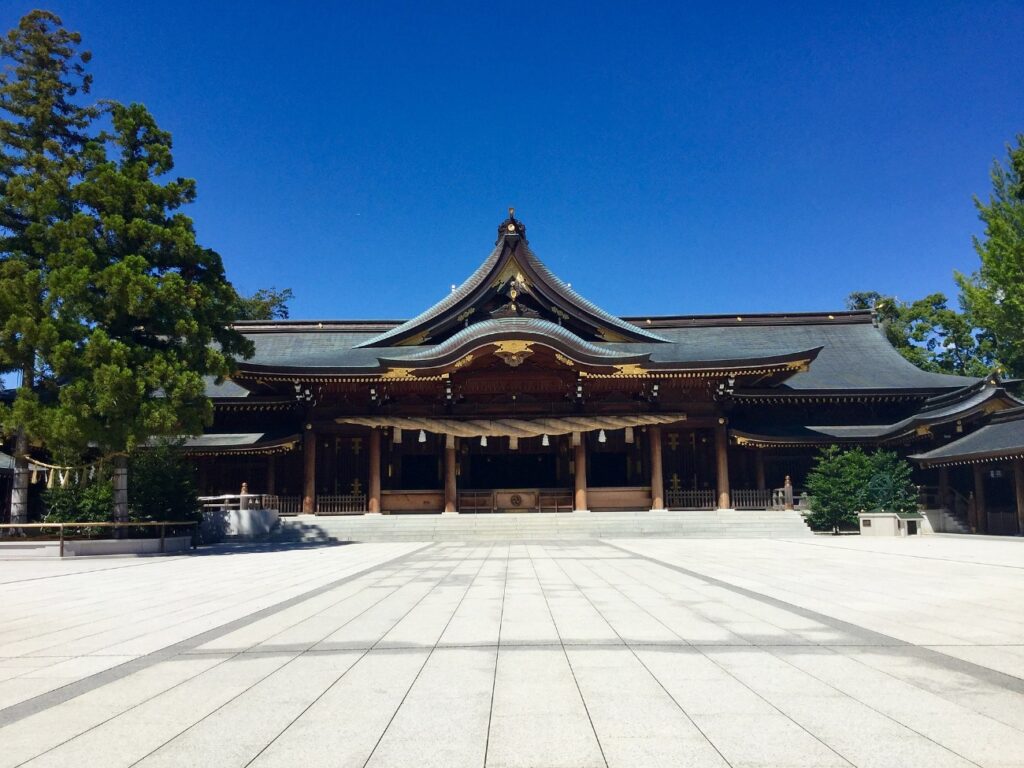
It has a copper-thatched roof made by Irimoya. (Although it is the mainstream these days, it was a pseudo-thatched roof)
The hall of worship has a structure that is said to be fully equipped with Karahafu and zigzag gables among the shrine carpenters. The main shrine is made of flow, and the shape of the corridor, the tower gate, and the shrine and temple’s gables are slightly different. In addition, the way of making the part called Mino instep may be different.
Impressive is the part where the eaves of the corridor gate are curved as a whole. I feel that this shape is surprisingly common in shrines in other prefectures. This building is made of Japanese cypress and the materials are wonderful.
To put it simply, Kiso Hinoki has fine annual rings and is said to be around 1 mm in Natsume and Fuyume.
I’m generally surprised to explain that 1mm is the size that I grew up for a year. It is a luxurious building made with plenty of wood for more than 100 years.
As an aside, before entering the hall of worship to pray, there is a member called a waist long press, and you can see the work of the destination. There is a butterfly plug in it, which conveys the spirit of the palace carpenter who was involved at that time.

